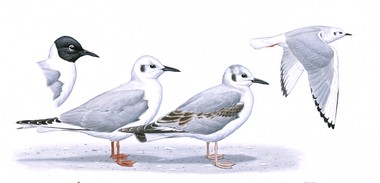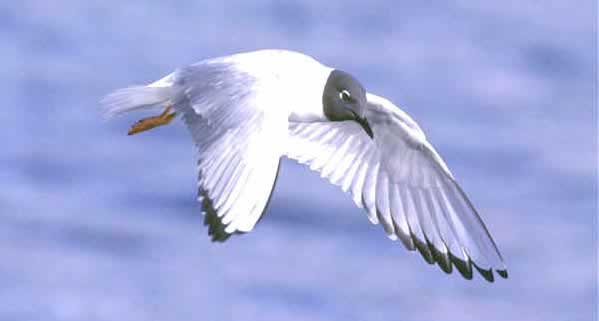|
|
Canku Ota |
|
|
(Many Paths) |
||
|
An Online Newsletter Celebrating Native America |
||
|
October 4, 2003 - Issue 97 |
||
|
|
||
|
Raven Helps the People |
||
|
Seagull had a beautiful daughter, and Raven fell in love with her.
When Raven saw the sun and the moon and the stars and fresh water hanging on the sides of Seagull's lodge, he knew what he should do. He watched for his chance to seize them when no one was looking. He stole all of them, and a brand of fire also, and flew out of the lodge through a smoke hole.
When the sun set, he fastened the moon up in the sky and hung the stars around in different places. By this new light he kept on flying, carrying with him the fresh water and the brand of fire he had stolen. It fell to the ground and there became the source of all the freshwater streams and lakes in the world. The Raven flew on, holding the brand of fire in his bill. The smoke from the fire blew back over his white feathers and made them black.. When his bill began to burn, he had to drop the firebrand. It struck rocks and went into the rocks. That is why, if you strike two stones together, fire will drop out.
Print and Color Your Own Seagull Picture |
|
|

 Long
ago, near the beginning of the world, Seagull was the guardian
of the sun and moon and stars, of fresh water and of fire. Seagull
hated people so much that he kept these things hidden. People
lived in darkness, without fire and without fresh water.
Long
ago, near the beginning of the world, Seagull was the guardian
of the sun and moon and stars, of fresh water and of fire. Seagull
hated people so much that he kept these things hidden. People
lived in darkness, without fire and without fresh water. At
that time, Raven was a handsome young man. He changed himself
into a snow-white bird, and as a snow-white bird he pleased Seagull's
daughter. She invited him to her father's lodge.
At
that time, Raven was a handsome young man. He changed himself
into a snow-white bird, and as a snow-white bird he pleased Seagull's
daughter. She invited him to her father's lodge. As
soon as Raven got outside, he hung the sun up in the sky. It made
so much light that he was able to fly far out to an island in
the middle of the ocean.
As
soon as Raven got outside, he hung the sun up in the sky. It made
so much light that he was able to fly far out to an island in
the middle of the ocean.  Raven's
feathers never became white again after they were blackened by
the smoke from the firebrand.
Raven's
feathers never became white again after they were blackened by
the smoke from the firebrand. Geographic
Range
Geographic
Range Bonaparte's
gulls are slate-gray headed with a very small black bill and bright
orange-red legs and feet. They have a white terminal band on tail feathers
and secondaries. In young birds, the wing has a dark-bordered appearance,
with flashy white wing tips. Adults reach 43 to 53 cm in body length.
Bonaparte's
gulls are slate-gray headed with a very small black bill and bright
orange-red legs and feet. They have a white terminal band on tail feathers
and secondaries. In young birds, the wing has a dark-bordered appearance,
with flashy white wing tips. Adults reach 43 to 53 cm in body length. Bonaparte's
gulls fly buoyantly and ternlike, with the bill held down. They are
very active on the wing. Along the coast, where they are more abundant
in fall, they feed offshore over tide channels and rips and kelp beds.
They feed largely by dipping to the surface of the water. However, occasionally
they drop into the water, take a few deep strokes, then glide to the
surface to flutter in one spot for a moment before taking off again.
Bonaparte's
gulls fly buoyantly and ternlike, with the bill held down. They are
very active on the wing. Along the coast, where they are more abundant
in fall, they feed offshore over tide channels and rips and kelp beds.
They feed largely by dipping to the surface of the water. However, occasionally
they drop into the water, take a few deep strokes, then glide to the
surface to flutter in one spot for a moment before taking off again.